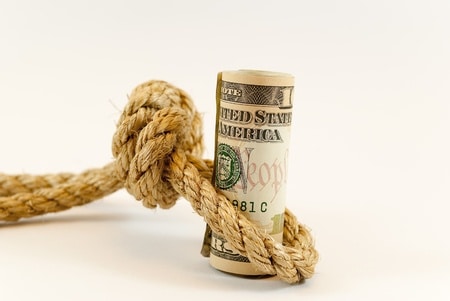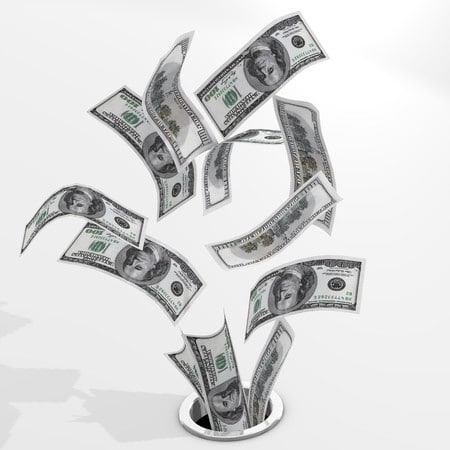Growth is great! Whether it is expanding into your third country or tapping into a new market, it’s an exhilarating process (especially for the entrepreneur). But it can also result in a crisis… You can’t fulfill orders; processes are being thrown out the door to just get it done; inventory isn’t leaving the warehouse. Growth can result in a disaster. When a company is growing at any speed, there are often growing pains that come with it. Over the past 20+ years, The Strategic CFO has witnessed and been a part of some incredible turnarounds that started from a few simple steps of improvement. The #1 growing pain stems from cash. Or, actually the lack of it. We often forget how growth affects cash flow, but it has huge repercussions if you are not watching it carefully.

What Happens When a Company Grows
When a company grows, the first visible thing that happens is cash gets tight. It’s very common for your marketing and sales team to see grow as only a good thing; nothing bad could be caused from growth. But when more sales come in, more employees are needed, more offices are required, more inventory is purchased, money can very quickly fly out the door. We say it frequently because it’s true: cash is king.
As you gear up for growth or are in the early stages of growth, also iron out some of the issues that may grow into problems as the company grows. For obvious reasons, start addressing any issues that impact the cash flow of the company. Then address other issues including management, accounting, product development, and labor.
Another thing that normally happens is that we are so excited about growth, and maybe cash is controlled, but we forget about controls, specifically internal controls. Money is flowing and product is flying off the shelf, but no one is watching what may be lose ends. Such as in a manufacturing scenario, material is being ordered as fast as you can get it and raw materials are being converted to finished goods. But maybe waste is also going through the roof because no one is watching that. Or maybe tools are mysteriously disappearing from the shop, or maybe your margins are actually suffering because your indirect costs have grown more than anticipated. The lack of having process and controls in place can lead to the mentioned issues, thus also leading to squeezing cash. Because ultimately, it all results in cash or consumption of cash.

Growing Too Quickly?
If you are in a company that is growing too quickly, it may be time to get some capital. There are several types of capital that you can acquire to fund your rapid growth. Ultimately, there are three ways to get capital.
Giving up equity is the most costly way to raise capital because as your grow you have given up some of the upside. The sources of either debt or equity include and are not limited to the following:
- Commercial lenders – banks
- Small business administration
- Private equity groups
- Friends and family
- Mezzanine Lenders
- Venture capitalists
At The Strategic CFO we can help you analyze the different cost of this capital and the most efficient structure for your business.
Start-ups, development of new products, etc. often require a good amount of working capital to support the rapid growth for those products or services to have a steady foothold in the marketplace. Consequently, they require a significant amount of cash and leadership for it to be catapulted into success. If this is you, start the cash flow improvement strategies early. Make it part of your culture and processes. The key is to manage your cash effectively so that each dollar can be stretched to the max. Download our free 25 Ways to Improve Cash Flow guide to start implementing tested and successful cash flow improvement strategies into your company.
Growth Affects Cash Flow by Absorbing Cash
If you haven’t figured out by now, growth has a way of absorbing cash. When a company wants to increase sales, it requires fuel – cash. As the financial leader of your company, shift your focus on improving profitability and providing fuel for your sales team to grow the company. While your CEO needs to grow the company, he or she needs a wingman to lean on. You are that wingman. Instead of acting as a CFnO (say it like CF No), provide a path for your CEO to grow the company. Guide them in your new cash flow improvement strategies.

Cash Conversion Cycle (CCC)
As you continue to look how growth affects cash flow, start by analyzing your cash conversion cycle. Simply, it is the amount of time that you are able to convert processes, resources, etc. back into cash. There are some simple steps to reduce your Cash Conversion Cycle (CCC) or operating cycle, but let’s see what it is and how you can use that to improve your cash flow.
What is the Cash Conversion Cycle?
The Cash Conversion Cycle (CCC) calculates the amount of time it takes to convert resources into cash flow. To calculate your CCC, use the following equation:
CCC = DIO + DSO – DPO
DIO stands for Days Inventory Outstanding. DSO stands for Days Sales Outstanding. And finally, DPO stands for Days Payable Outstanding. By using the CCC, you will be able to identify areas of improvement.
For example, if you are collecting receivables every 45 days, you may have an opportunity to reduce that to 30 days. By collecting receivables 15 days earlier, you will not be in as large of a cash crunch because that cash is in the bank 30 days after the service is rendered versus 45 days. To calculate DSO, use the following formula:
DSO = 365 * (Average Accounts Receivable / Total Credit Sales)
How to Improve Your Cash Flow
There are several ways to improve your cash flow using the Cash Conversion Cycle. Some of these include improving collections (A/R), invoicing quicker, obtaining deposits faster, extending vendors so that you can pay later, and reduce the amount of inventory stored. For example, a few of our clients are in the oil & gas industry. When the oil & gas industry takes a downward turn, we are impacted because they cannot pay us as quickly, but they need us more than ever. One of the tactics we put into practice to improve our cash flow was to invoice within 24 hours. Our clients were being trained to respond to us quicker and pay our invoices. Therefore, we were then able to do more to help them.
There are so many other ways to improve your cash flow, especially in times of growth when cash is tightest. If you are seeking more ways to make a big impact in your company, download the free 25 Ways To Improve Cash Flow whitepaper to find other ways to improve your cash flow within 24 hours.

Access your Cash Flow Tuneup Execution Plan in SCFO Lab. This tool enables you to quantify the cash unlocked in your company.
Click here to access your Execution Plan. Not a Lab Member?
Click here to learn more about SCFO Labs











